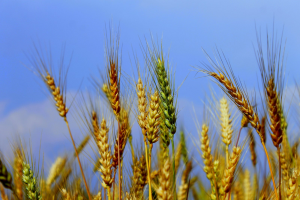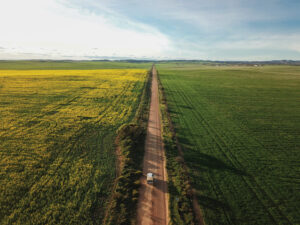Grain and oilseed markets are showing some good old-fashioned spring (in the northern hemisphere) volatility. We know that springtime dryness can grow into real production cuts, so pricing short-term is fraught. It does open the option to kick the can down the road.
Chicago
Soft Red Wheat (SRW) Futures have been strong in the last fortnight, gaining
close to 15% as Russian and European weather dominates the market. We can see in Figure 1 that SRW is at the top
of the 8-month range but still remains well behind the highs of 2023.
The war-induced
peaks of 2022 make the moves of 2024 look positively benign. Regardless, producers will be happy to see
new crop values moving back towards $400/t, but there should be some caution
locking in prices.
When wheat
prices rally at this time of year it is usually due to dry weather. As we saw last week the market can fall on
rain forecasts or actual rainfall, but markets will bounce if rain is not
enough. The too much rain issue we are seeing in Europe is interesting. When it is too wet we can see price rally on
the back of production issues and quality downgrades.
Production
cuts are often overstated on wet weather, as the crop that doesn’t get too wet gains
benefit from the extra precipitation.
With so much uncertainty around the short term, we can look further out
to take advantage of price rises.
Figure 2
shows the forward curve for SRW, with prices ticking above $400/t for December
25. While the Dec-25 price will rise if
spot wheat rallies, the curve will likely flatten. The market will expect supply to increase for
the next crop, thereby keeping a lid on prices further out.
The Matif
Rapeseed curve is much flatter, as shown in Figure 3. There is not a lot to be gained from using
contracts further out to take advantage of the recent rise in prices.
What does it mean?
Selling wheat futures at swaps at close to $400/t has historically been prudent, but that was before all the geopolitical issues came up that currently plague the market. Using swaps further out (while there is a significant premium in those contracts) can lock in some of the recent price rises while avoiding short-term volatility.
Have any questions or comments?
Key Points
- Weather issues in Europe have added strength to wheat and oilseed pricing.
- Wheat forwards are showing a good premium for deferred contracts.
- Selling Dec-25 wheat futures locks in the price rise while avoiding short-term volatility.
Click on figure to expand
Click on figure to expand
Click on figure to expand
Data sources: Refinitiv, Mecardo















